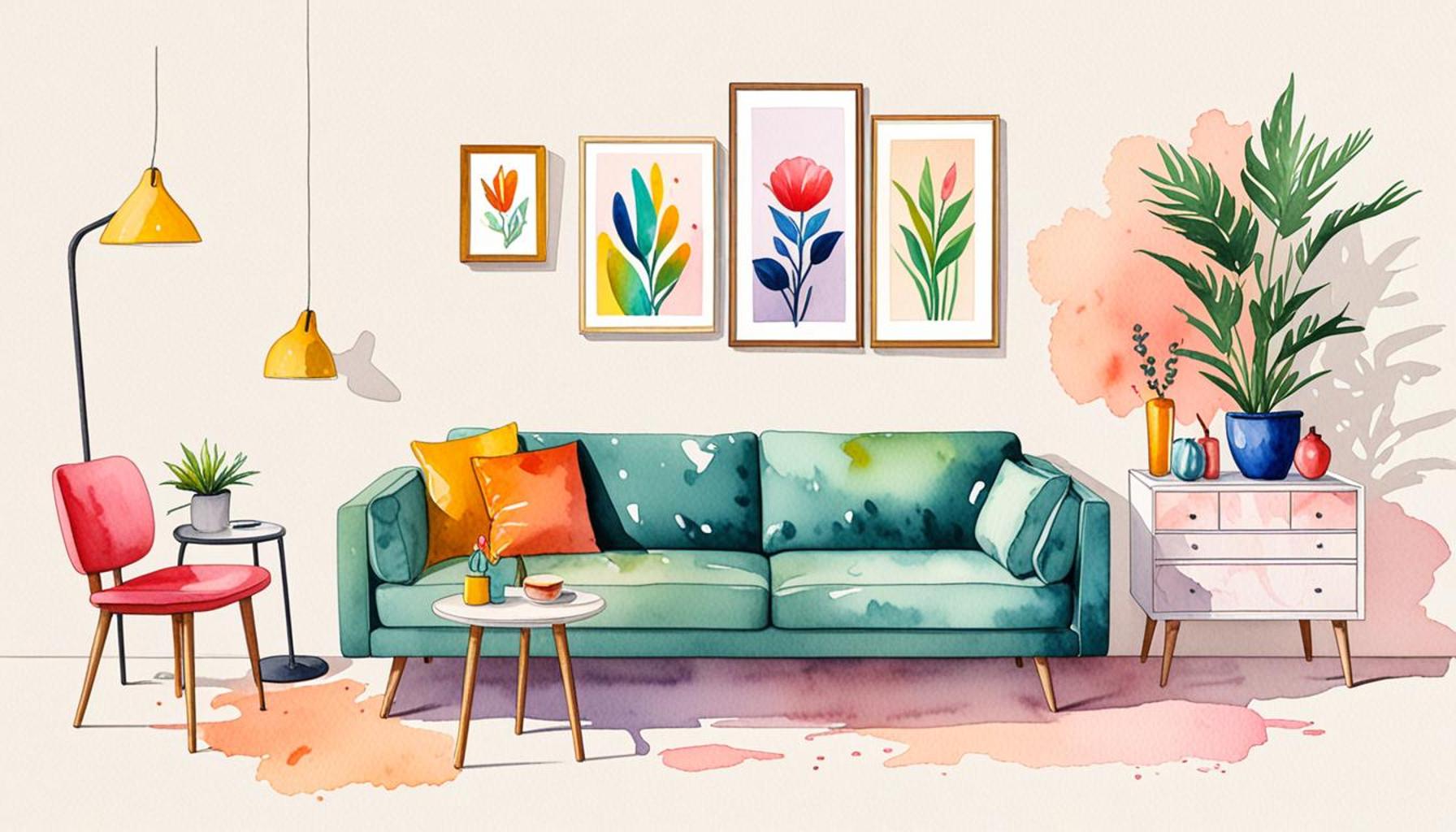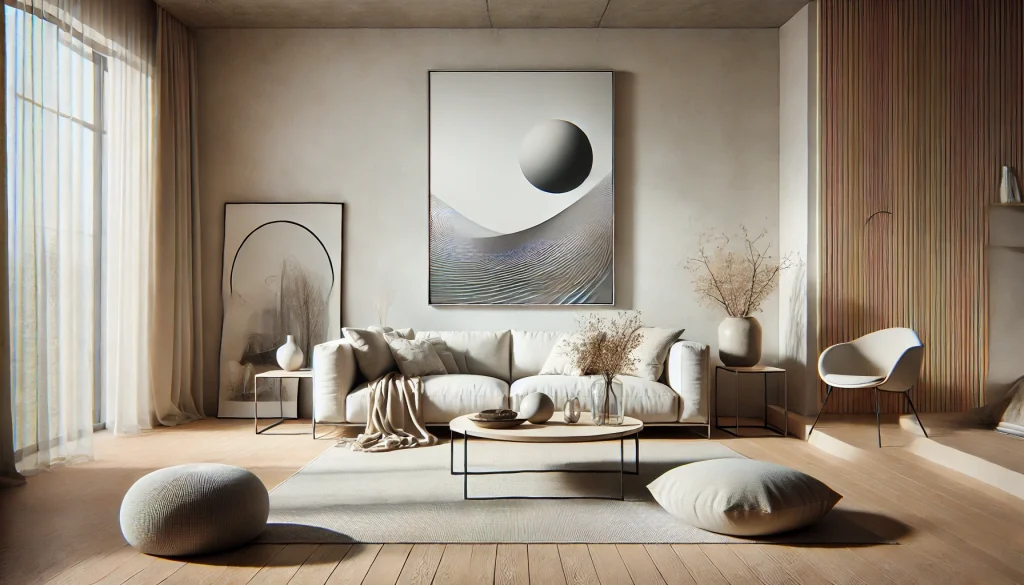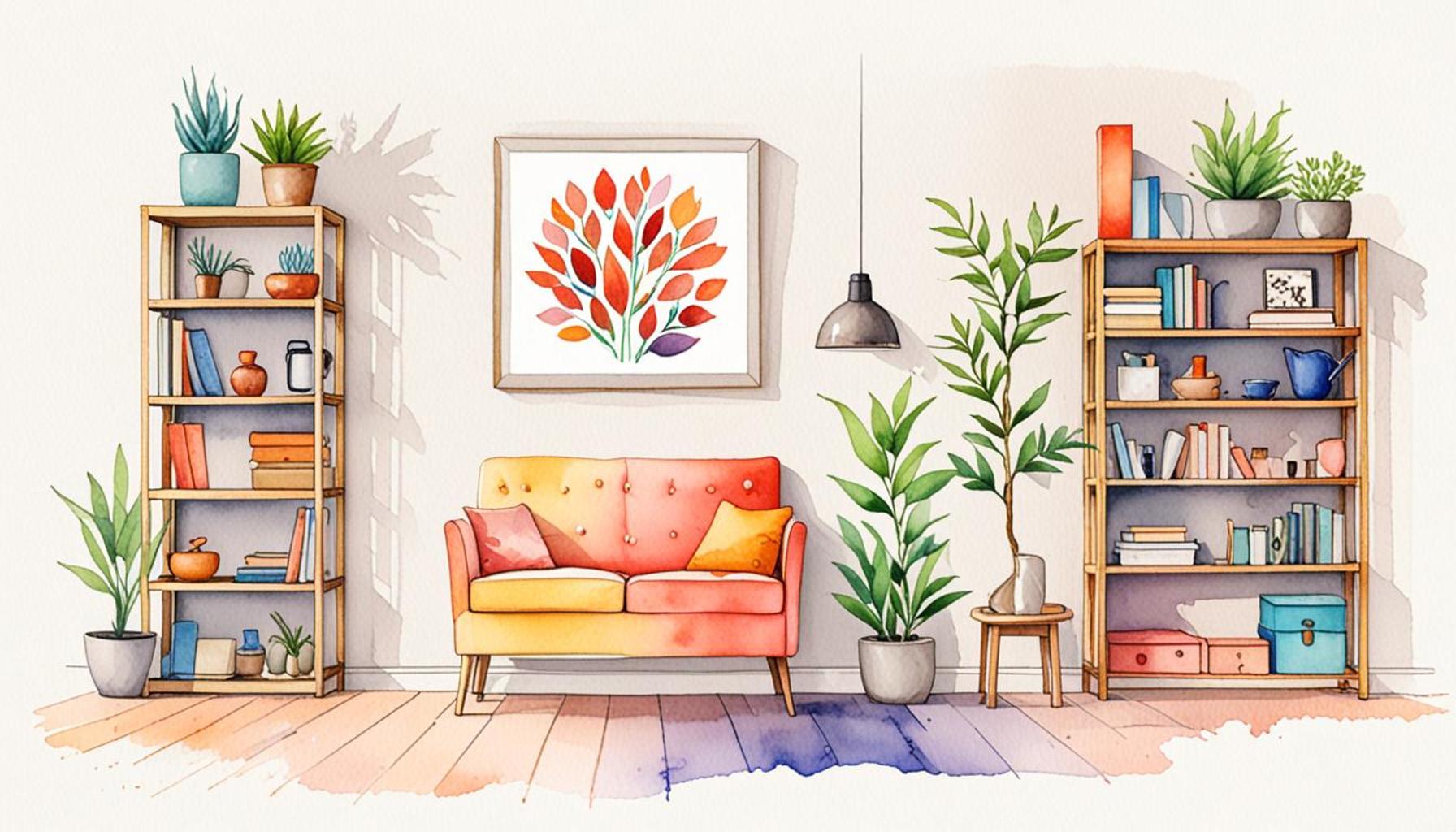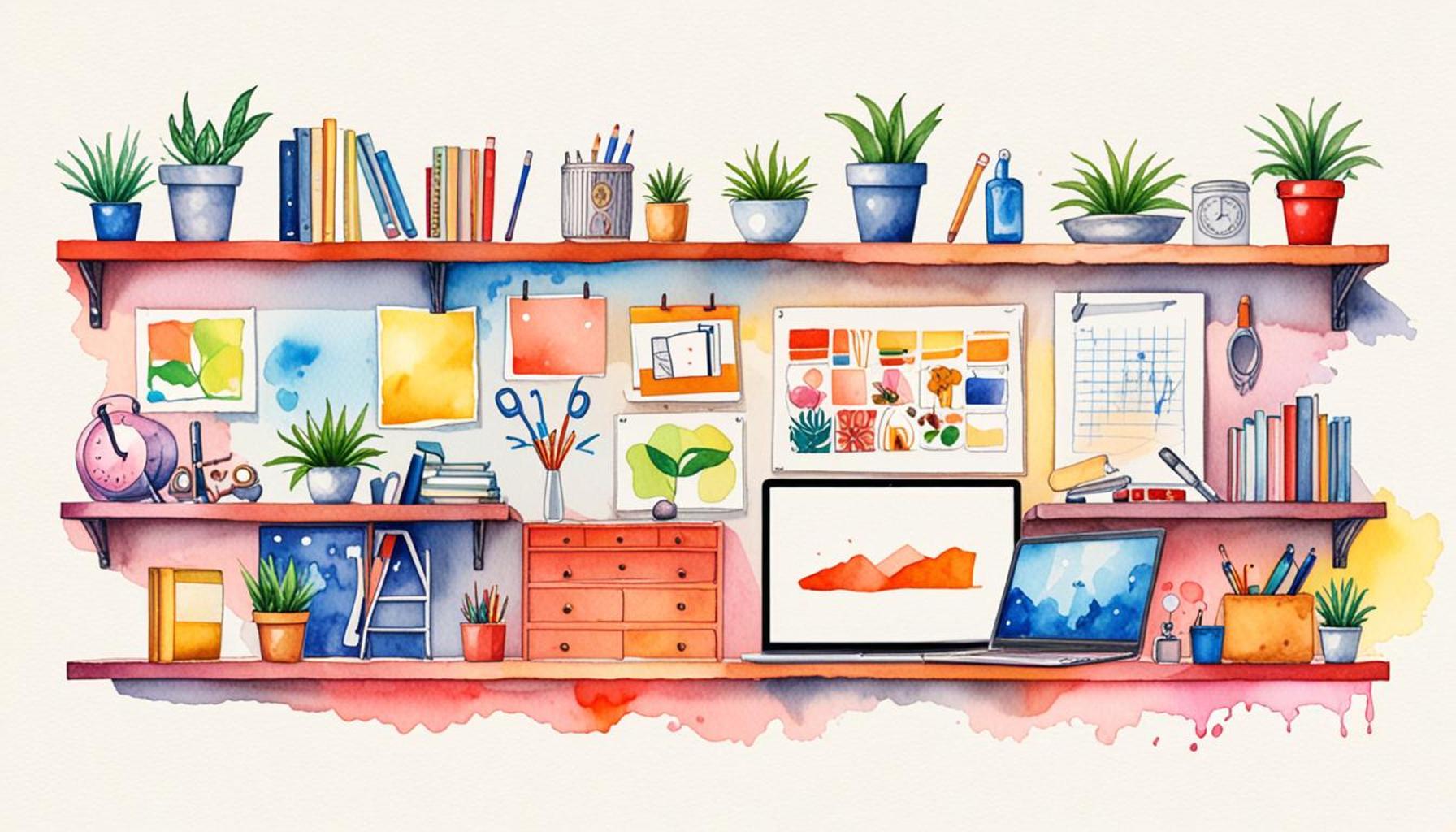How Intentional Design Can Influence Furniture Choice in Minimalist Spaces

Redefining Minimalism
In a world increasingly captivated by the less-is-more philosophy, minimalism has transformed the way we perceive interior spaces. It emphasizes functionality and aesthetics, creating environments that are both serene and sophisticated. But how do we select the right furniture to complement this intentional design approach?
The Power of Intentional Design
Intentional design is not just about choosing items that look good; it encompasses a deeper commitment to making thoughtful decisions that enhance the overall ambiance of a space. With the rise of minimalism, every element in a room contributes not only to visual appeal but also to a sense of calm and order. Here are some key aspects to consider:
- Functionality: Every piece of furniture should serve a purpose. Consider a stylish coffee table that doubles as a storage unit or modular seating that can be rearranged according to social needs. Such choices allow for a multifunctional space that avoids unnecessary clutter.
- Scale: Furniture should be proportionate to the space it occupies. A sprawling sectional in a small apartment can feel overwhelming. Instead, opt for sleek, streamlined pieces that create an illusion of space while maintaining comfort.
- Color Palette: A cohesive color scheme contributes to harmony within the environment. Neutral tones such as whites, grays, and beiges promote tranquility, while a couple of accent colors can add personality without overwhelming the senses.
- Material Quality: Durable materials ensure longevity. Investing in well-crafted furniture means less frequent replacements, which reduces clutter and waste over time. Think of hardwood floors paired with leather sofas that age beautifully and withstand the test of time.
By focusing on these elements, one can create a cohesive and inviting environment that truly embodies the ideals of minimalism. The choices made in furniture selection are crucial; they can significantly impact how spacious or cozy a room feels, as well as how well it functions for your lifestyle.
Exploring Furniture Choices
From multi-functional pieces to understated designs, the array of options available is vast and diverse. For instance, consider a combination of a dining table that extends for gatherings and condenses for daily use, which is perfect for urban living where space is at a premium. Additionally, consider incorporating vertical storage solutions, such as shelves that draw the eye upwards, thereby enhancing ceiling height and creating a sense of openness.
As you delve deeper into this article, you will discover how each decision made in intentional design can harmoniously influence furniture choice in minimalist spaces. The journey into minimalism allows for a more curated lifestyle, one that celebrates essentialism, encouraging you to invest in fewer, higher-quality pieces that speak to your personal style while contributing to a serene living environment.

DISCOVER MORE: Click here to find helpful tools
Harmonizing Function and Aesthetics
The intersection of intentional design and minimalist living is a space where purpose meets elegance. In minimalist interiors, every furniture piece becomes an opportunity to emphasize functionality while maintaining a serene aesthetic. When selecting furniture, the principle of intentionality urges homeowners to ask not merely, “What do I need?” but “How can this contribute to the overall harmony of my space?”
To aid in the pursuit of such harmony, consider the following guiding principles:
- Uniformity in Design: Select furniture that shares a common design ethos. For instance, opting for Scandinavian-inspired pieces—characterized by their clean lines and organic forms—can create a cohesive look that enhances the minimalist vibe.
- Natural Light Management: Incorporate pieces that allow for the optimization of natural light. A glass-top dining table or light-colored upholstery can reflect light, making the space feel larger and more vibrant rather than dark and cramped.
- Versatility: Seek out furniture that can adapt to different functions. A foldable desk can serve as a workstation when needed, but when not in use, it can simply blend into the background. This adaptability is especially crucial in smaller living areas, where every square foot must count.
- Textural Balance: While minimalism leans toward a lack of clutter, textures can add depth. Consider mixing materials like metal, wood, and fabric to avoid a flat appearance, which can lead to a cold or uninviting atmosphere.
These elements highlight the importance of making conscious choices. Instead of opting for trendy, but impractical pieces, intentional design encourages homeowners to invest in furniture that not only aligns with minimalist principles but also enhances the functionality and comfort of the space.
The Impact of Space Planning
Effective space planning plays a crucial role in achieving a minimalist aesthetic. The arrangement of furniture defines traffic flow and influences how residents engage with their environment. For example, an open floor plan benefits from strategically placed furniture that encourages conversation while avoiding fragmentation of space. This can involve using continuous seating along walls or placing rugs to delineate separate areas without added bulk.
Moreover, thoughtful space planning allows for the integration of natural elements, such as indoor plants or landscape art, boosting mood while sticking to the minimalist mantra of ‘less is more.’ This connection to nature can help offset the starkness that sometimes accompanies minimalist design.
As we explore how intentional design influences furniture choice in minimalist spaces, it is essential to recognize these decisions affect not just aesthetics but also functionality and well-being. Every mindful selection made can transform a space into a haven of tranquility, subtly promoting a life of simplicity and elegance.
How Intentional Design Shapes Furniture in Minimalist Environments
In minimalist spaces, furniture selection transcends mere functionality; it embodies a philosophy of intentional design that emphasizes simplicity and purpose. This approach not only streamlines aesthetics but also enhances the functionality of the space, creating an environment that feels both serene and welcoming. One of the key aspects of intentional design is the concept of multi-functionality. Furniture pieces are crafted to serve multiple purposes, reducing clutter and aligning with minimalist values. For instance, a stylish ottoman that doubles as storage allows for effective space management without compromising on style. This thoughtful selection not only optimizes space but also contributes to a less chaotic environment.Moreover, the choice of materials plays a crucial role in how furniture fits into minimalist spaces. High-quality, sustainable materials such as natural wood, metal, and organic textiles are often preferred. These materials not only add warmth and texture but also reflect a commitment to sustainability—a core tenet of modern minimalist living. In addition, the colors and textures chosen for furniture can significantly influence the overall atmosphere of a minimalist room. Neutral palettes create a sense of calm and clarity, allowing the mind to focus. The carefully curated selection of colors promotes a cohesive look that enhances the beauty of simplicity. Selecting furniture for its intended emotional and physical impact fosters a more resonant living experience.Ultimately, when individuals embrace intentional design in their furniture choices, they create spaces that evoke peace, harmony, and functionality. Such environments support a lifestyle that favors quality over quantity, encouraging mindfulness and appreciation for each curated piece. This intentionality inspires homeowners not only to choose wisely but also to interact thoughtfully with their surroundings, paving the way for a fulfilling minimalist lifestyle.
| Category 1 | Category 2 |
|---|---|
| Multi-functionality | Functional furniture serves multiple roles, reducing clutter. |
| Material Selection | Sustainable materials enhance aesthetics and reflect minimalist values. |
| Color Schemes | Neutral palettes promote tranquility and cohesion in design. |
In exploring the intricate relationship between intentional design and furniture choice in minimalist spaces, it becomes clear how these elements interact to craft environments that resonate with intentional living.
DIVE DEEPER: Click here to discover minimalist organization strategies
Integrating Personal Style with Minimalism
While intentional design emphasizes functionality and cohesion in minimalist spaces, it also provides a canvas for personal expression. Indeed, minimalism does not mean relinquishing one’s individual style but, rather, refining it to align with a focused aesthetic. To achieve this balance, homeowners can adopt various strategies that allow them to reflect their taste without overcrowding their spaces.
One effective method is incorporating statement pieces that draw the eye and make a bold impression without overwhelming the surroundings. For instance, a uniquely designed chair or a beautifully crafted shelf can serve as a focal point, enriching the decor while remaining within the minimalist ethos. These pieces should be selected with care—each should have a story or significance to the homeowner, thus embedding personal narrative into the design.
Another avenue for introducing personality into a minimalist space is through artwork and accessories. However, it is crucial to choose them wisely. Rather than using numerous small decorative items that create clutter, opt for a few larger pieces that resonate with personal values or aesthetics. A well-chosen painting or a single sculptural piece can convey a sense of style and draw attention, all while complementing the minimalist surroundings. The key lies in selecting items that add meaning without detracting from the clean and open ambiance.
The Role of Color Psychology
Decisions around color play a significant role in the effectiveness of intentional design within minimalist spaces. The psychological impact of color can enhance both the mood and functionality of the environment. For instance, cool colors like blues and greens can evoke calmness and serenity, making them ideal for a home office or bedroom where peace is paramount. In contrast, warmer hues such as yellows or terracottas can invigorate spaces like kitchens or dining areas, encouraging social interaction and creativity.
Moreover, incorporating color in the form of furniture can lead to remarkable transformations. A vibrant, singular piece can act as a conversation starter, while still maintaining the overall minimalist vibe. Notably, a minimalist approach doesn’t mean all-white or neutral palettes; rather, it allows for carefully curated pops of color that establish a balanced atmosphere.
Sustainability in Furniture Selection
In recent years, there has been a growing trend towards sustainable furniture choices, which align seamlessly with intentional design and minimalist living. Homeowners can seek furniture made from ethically sourced, recycled, or upcycled materials that not only reduce their carbon footprint but also contribute to a unique aesthetic. The inclusion of sustainable designs often embodies craftsmanship and innovative practices, making them conversation pieces in their own right.
Brands focusing on sustainable production, such as Nitori and West Elm, emphasize the importance of reducing waste while delivering furniture that aligns with minimalist sensibilities. By investing in furniture constructed to last—both in design and durability—homeowners can minimize environmental impact while adhering to the minimalist ethos of quality over quantity.
Ultimately, intentional design fosters a holistic approach, combining functionality, personal expression, psychology, and sustainability in the process of selecting furniture for minimalist spaces. Each choice made contributes to a cohesive and thoughtful living environment, setting the foundation for a more meaningful and mindful lifestyle.
DISCOVER MORE: Click here to enhance your productivity
Conclusion
In summary, intentional design plays a pivotal role in shaping furniture choices within minimalist spaces by combining functionality, personal expression, color psychology, and sustainability. As homeowners seek to create serene yet inviting environments, understanding how each aspect interconnects enhances their ability to curate impactful living spaces.
By carefully selecting statement pieces and meaningful accessories, individuals can stay true to their unique style while adhering to minimalist principles. Each furniture selection becomes a reflection of personal narrative, contributing to a cohesive aesthetic that enriches the home rather than complicating it. The significance of color choices cannot be overlooked; the psychological effects of hues impact mood and ambiance, which should be an essential consideration when devising design plans.
Moreover, as the demand for sustainable practices grows, integrating eco-friendly furniture not only supports a minimalist lifestyle but also promotes environmental consciousness. Brands that prioritize ethical sourcing and craftsmanship offer homeowners the opportunity to invest in pieces that are both beautiful and sustainable, melding quality with style.
Ultimately, embracing intentional design empowers homeowners to cultivate meaningful minimalist spaces that resonate with their values and aesthetics. As you embark on your journey towards a thoughtfully designed home, remember that every piece of furniture carries the potential to transform and define your interior landscape, aligning perfectly with the essence of minimalist living.


